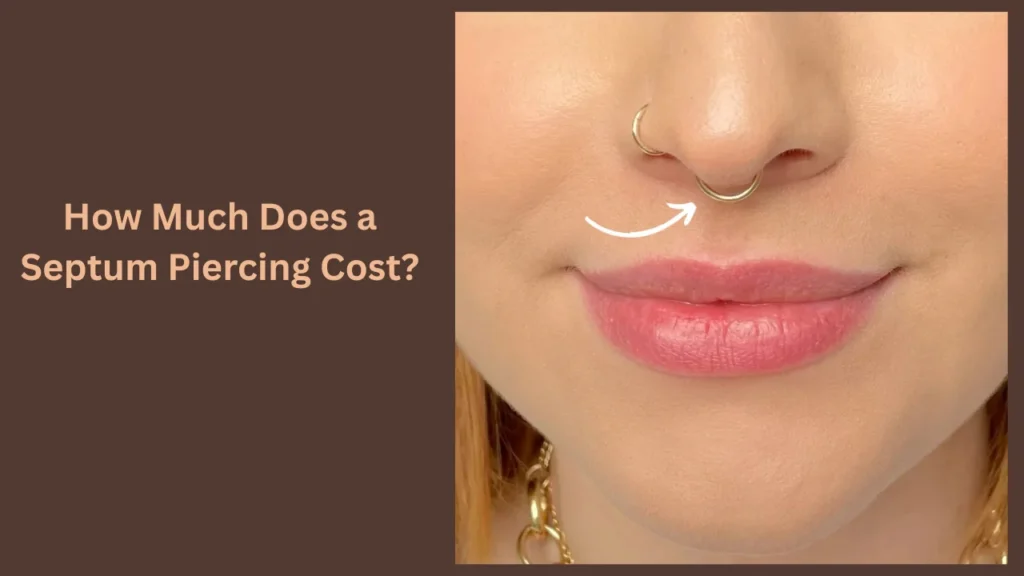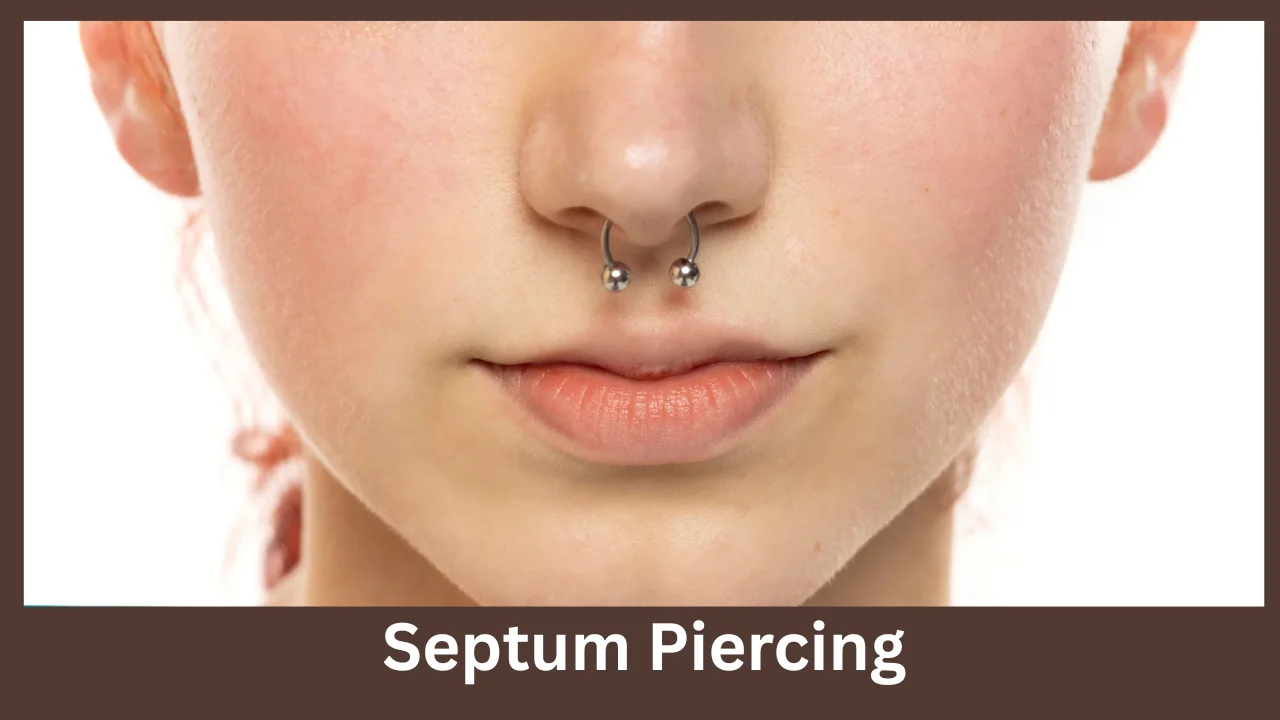Septum piercing has become one of the most popular body modifications in recent years. Whether you’ve seen it on celebrities, influencers, or friends, this piercing is now a major fashion statement. But before you head to a piercing studio, it’s important to understand what a septum piercing is, how it’s done, and how to care for it properly.
This article will guide you through the septum piercing process, benefits, risks, pain levels, healing time, jewelry options, aftercare, and frequently asked questions. Let’s dive in!
What Is a Septum Piercing?
A septum piercing is a type of nose piercing that goes through the soft tissue between the nostrils, not the cartilage. The spot where the piercing is placed is called the “sweet spot.” It’s the thin piece of skin just below the cartilage and above the base of the nose.
ALSO READ: Newsweek Wordle Hint Today Game Changer
This style of piercing has roots in ancient cultures. Tribes in South America, Central America, India, and Africa have practiced septum piercing for centuries. Today, it’s worn worldwide as a symbol of style and self-expression.
Why Do People Choose Septum Piercing?
There are many reasons why people love :
- Fashion Statement: It looks unique and edgy. Many celebrities, including Zoë Kravitz and Bella Thorne, have made this piercing mainstream.
- Cultural Symbolism: For some, it connects to their heritage and tribal traditions.
- Reversible Appearance: Unlike other facial piercings, you can easily hide it by flipping the jewelry inside your nose.
- Personal Identity: Many people get it to express individuality and confidence.
How Is a Septum Piercing Done?
Getting a septum piercing is a straightforward process when done by a professional piercer. Here’s what usually happens:
- Consultation: The piercer checks your anatomy to find the “sweet spot.”
- Cleaning: The inside and outside of your nose are cleaned with antiseptic.
- Marking: The piercer marks the exact spot for the needle.
- Piercing: Using a sterilized hollow needle, the piercer makes the hole. This takes only a few seconds.
- Jewelry Insertion: Typically, a circular barbell or captive bead ring is inserted right after the piercing.
ALSO READ: Ar15.Com Forum Customization And Support
Does a Septum Piercing Hurt?
Pain is subjective, but most people say it pain is mild to moderate. Since the needle goes through soft tissue, it’s not as painful as cartilage piercings.
You may experience:
- A quick pinch when the needle goes through.
- Watery eyes immediately after (this is a normal body reaction).
- Soreness for a few days during healing.
On a pain scale from 1 to 10, most rate it between 3 and 5.
Healing Time and Aftercare
Proper care is essential for a healthy it. Healing times vary depending on the person, but usually:
- Initial Healing: 6 to 8 weeks.
- Full Healing: Up to 6 months.
Aftercare Tips:
- Clean Twice Daily: Use saline solution or sea salt soaks.
- Avoid Touching: Only touch your piercing with clean hands.
- No Rotating Jewelry: Leave the jewelry in place to avoid irritation.
- Be Gentle: Avoid bumping your nose or playing with the jewelry.
- Watch for Infection: Redness, swelling, or pus can be signs of infection. Consult a piercer or doctor if needed.
Types of Septum Piercing Jewelry
Once your it heals, you can try different jewelry styles. Here are the most popular options:
| Jewelry Type | Description |
|---|---|
| Circular Barbell | Two beads on each end of a curved bar. |
| Captive Bead Ring | A hoop with a single bead that closes the circle. |
| Clicker Ring | A ring that snaps shut with a hinge. |
| Septum Retainer | A discreet U-shaped piece that can flip up inside the nose. |
Each type has different looks and comfort levels. Always choose high-quality metals like surgical steel, titanium, or gold to prevent irritation.
Pros and Cons of
Before getting it, it’s good to weigh the benefits and drawbacks.
Pros:
- Unique Look: Stands out from common ear or nostril piercings.
- Easy to Hide: Retainers make it possible to keep it hidden during work or school.
- Quick Healing: Softer tissue usually heals faster than cartilage.
- Cultural Significance: Holds meaning for many cultures.
Cons:
- Potential for Infection: Like any piercing, poor aftercare can cause problems.
- Discomfort During Healing: Swelling and tenderness are common.
- Not for Everyone: Some people don’t have the right anatomy (no sweet spot).
- Smell (Septum Funk): Bacteria buildup on jewelry can create odor if not cleaned regularly.
How Much Does a Septum Piercing Cost?

The price of a septum piercing depends on location, studio, and jewelry. On average:
| Region | Price Range |
|---|---|
| USA | $40 – $100 |
| UK | £30 – £70 |
| Europe | €35 – €85 |
| Other regions | Varies |
High-end studios may charge more due to their experience, sterilization methods, and premium jewelry options.
Risks and Complications
Although septum piercing is safe when done properly, risks can still happen:
- Infection: Usually due to poor aftercare.
- Allergic Reaction: Nickel in jewelry can cause irritation.
- Crooked Piercing: An unskilled piercer may not find the “sweet spot,” leading to uneven placement.
- Scar Tissue: Improper healing can cause bumps or thick tissue.
Always choose a licensed and reputable piercer to minimize these risks.
Tips for Choosing a Piercing Studio
Choosing the right place for your septum piercing is key. Look for:
- Certified Piercers: Ask about their training and experience.
- Clean Environment: The studio should follow strict hygiene standards.
- Sterile Tools: All needles and jewelry should be pre-sterilized.
- Good Reviews: Check online ratings and read customer feedback.
Don’t choose a piercer based on price alone. Safety and skill should be your top priorities.
How to Change Septum Jewelry Safely
Once your septum piercing is fully healed, you might want to switch jewelry. Here’s how to do it safely:
- Wash Your Hands: Avoid introducing bacteria.
- Use Lubricant: A small amount of saline or non-scented oil can help.
- Be Gentle: Slowly remove the old jewelry and insert the new piece.
- Check for Irritation: If you feel pain or swelling, stop and try again later.
If you’re nervous about changing it, ask a professional piercer for help.
Frequently Asked Questions
Can I Hide My Septum Piercing?
Yes! A septum piercing is easy to hide using a retainer or by flipping a circular barbell upward into your nostrils.
Can I Go Swimming After Getting a Septum Piercing?
Avoid pools, lakes, and hot tubs for at least 4-6 weeks after a septum piercing to prevent infection.
What If I Don’t Like It?
If you decide the septum piercing isn’t for you, removing the jewelry usually allows the hole to close on its own, especially if it’s new.
Will It Leave a Scar?
Most people do not get noticeable scars from a septum piercing, but healing varies per person.
Conclusion
A septum piercing is a bold and stylish choice for anyone looking to express their individuality. It has cultural roots, modern fashion appeal, and can be as discreet or as flashy as you want.
Understanding the process, aftercare, risks, and jewelry options will help you make the best decision for your body. If you choose a reputable piercer and follow proper aftercare, your septum piercing can be a safe and rewarding experience.
